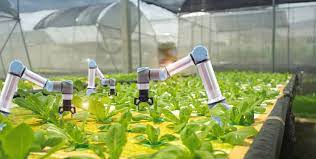Launches Open Source Agriculture Infrastructure: Revolutionizing Farming for the Future

Enhancing Collaboration and Knowledge Sharing
The open-source agriculture infrastructure fosters collaboration and knowledge sharing among farmers, researchers, and industry experts. By providing a platform for the exchange of ideas, techniques, and data, this initiative enables stakeholders to collectively tackle the challenges faced by modern agriculture. Through online forums, discussion boards, and shared repositories, farmers can access a wealth of information on best practices, crop varieties, pest management strategies, and more. This democratization of knowledge empowers farmers of all scales to make informed decisions and implement innovative solutions on their farms.
Moreover, the open-source nature of this infrastructure encourages the development of new technologies and tools. With access to a vast network of contributors, developers can collaborate on creating software applications, hardware devices, and sensors specifically designed for agricultural purposes. This collaborative approach not only accelerates the pace of innovation but also ensures that these technologies are tailored to the needs of farmers worldwide.
Improving Efficiency and Sustainability
One of the key advantages of open-source agriculture infrastructure lies in its ability to enhance efficiency and sustainability in farming practices. By leveraging data-driven insights and advanced analytics, farmers can optimize resource allocation, reduce waste, and increase yields. For instance, by analyzing weather patterns, soil conditions, and historical crop data, farmers can make informed decisions regarding irrigation, fertilization, and pest control. This data-driven approach minimizes the use of water, fertilizers, and pesticides, resulting in cost savings and reduced environmental impact.
Furthermore, the open-source infrastructure enables the integration of emerging technologies such as precision agriculture and Internet of Things (IoT) devices. These technologies provide real-time monitoring and control of various farm operations, allowing farmers to remotely manage irrigation systems, monitor crop health, and detect early signs of disease or pest infestations. By harnessing the power of automation and data analytics, farmers can optimize their operations, reduce labor costs, and minimize the ecological footprint of their farms.
Fostering Resilience and Adaptability
Climate change poses significant challenges to agriculture, with extreme weather events becoming more frequent and unpredictable. The open-source agriculture infrastructure equips farmers with the tools to build resilience and adaptability in the face of these challenges. By sharing climate data, predictive models, and risk assessment tools, farmers can make informed decisions regarding crop selection, planting schedules, and disaster preparedness. This collaborative approach enables farmers to anticipate and mitigate the impacts of climate change, reducing the vulnerability of their farms and ensuring food security for future generations.
Moreover, the open-source nature of this infrastructure encourages the development of region-specific solutions. Farmers from different parts of the world can contribute their knowledge and experiences, sharing insights on crops that thrive in specific climates or innovative farming techniques suited to local conditions. This exchange of information allows farmers to adapt and adopt practices that are most suitable for their regions, promoting agricultural diversity and resilience on a global scale.
Challenges and Future Outlook
While the launch of open-source agriculture infrastructure holds immense promise, it is not without its challenges. One of the key hurdles is ensuring widespread adoption and participation from farmers around the world. Overcoming language barriers, technological limitations, and varying levels of digital literacy will be crucial in ensuring the inclusivity and success of this initiative. Additionally, addressing concerns regarding data privacy and intellectual property rights will be essential to build trust among stakeholders.
Looking ahead, the future of open-source agriculture infrastructure appears bright. As more farmers and researchers join this global network, the collective knowledge and innovation will continue to grow exponentially. The potential for cross-pollination of ideas and the development of novel solutions holds the key to transforming agriculture into a more sustainable, efficient, and resilient industry.
Conclusion:
The launch of open-source agriculture infrastructure marks a significant milestone in the quest for sustainable and efficient farming practices. By fostering collaboration, enhancing efficiency, and promoting resilience, this initiative has the potential to revolutionize agriculture for the better. As farmers worldwide embrace this open-source approach, the future of farming looks promising, with increased productivity, reduced environmental impact, and improved food security on the horizon.





